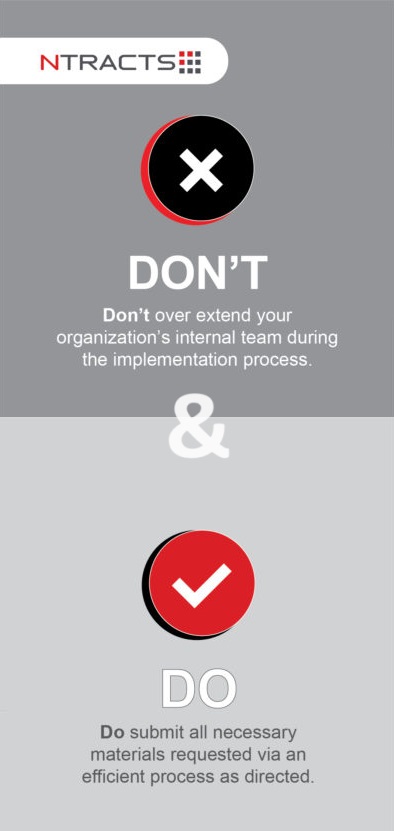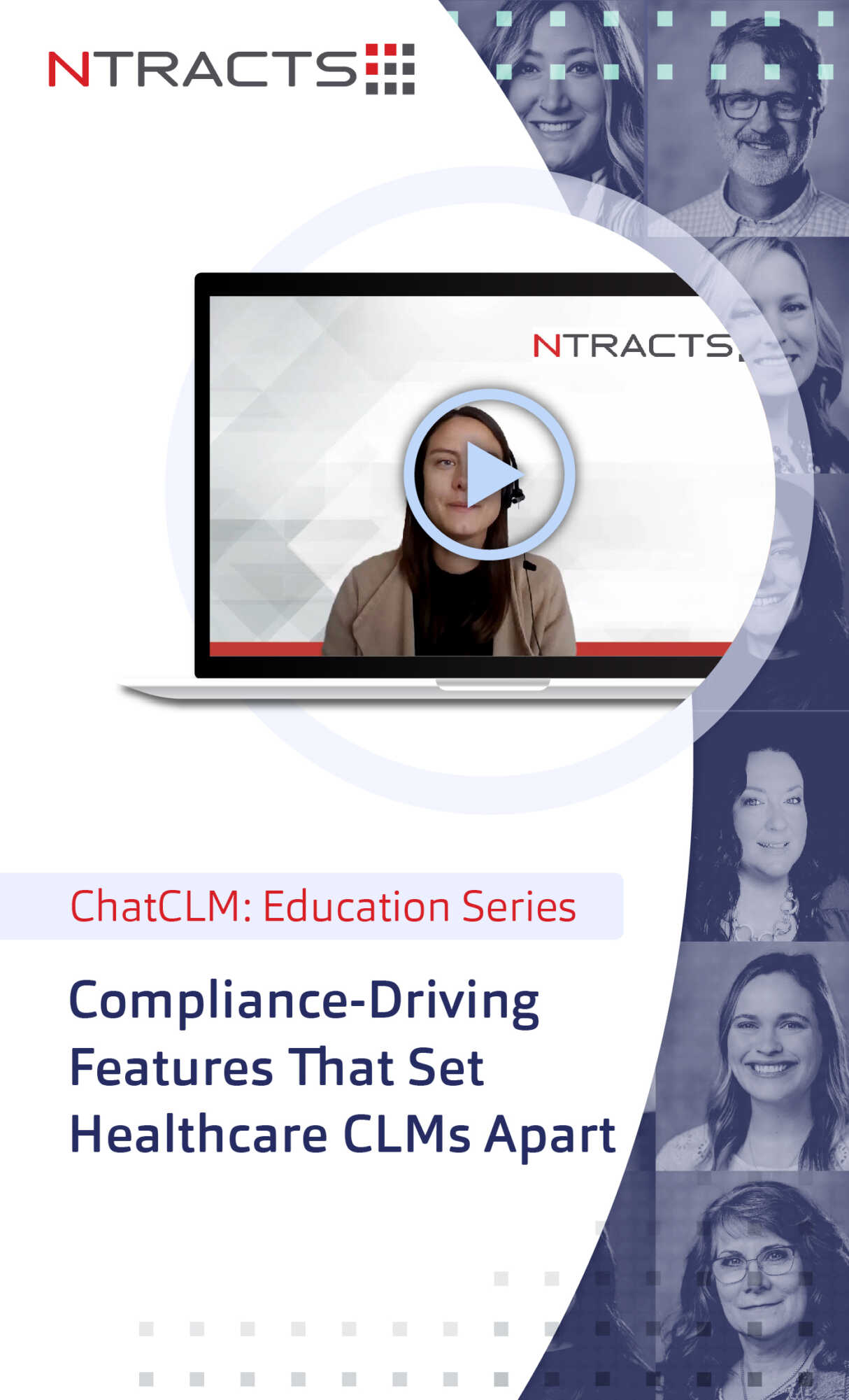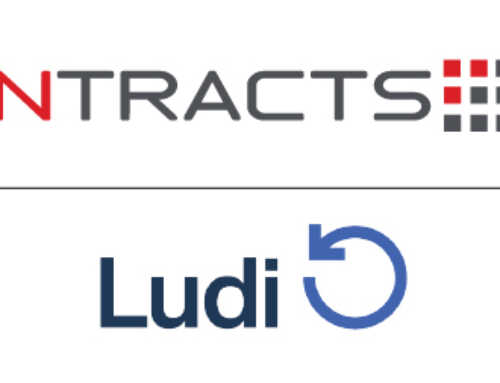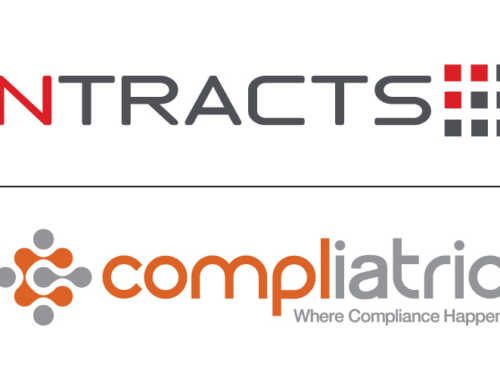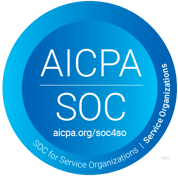Contract Lifecycle Management (CLM) systems are essential for healthcare organizations looking to manage their contracts effectively. Getting through the CLM implementation process without your documents and data loaded or migrated appropriately into the platform can commonly result in a multitude of unforeseen, negative outcomes: extended implementation periods (sometimes taking up to a year or more to get implemented), data loaded incorrectly, and unexpected costs of implementation.
In this article, we’ll delve into the common pitfalls of CLM implementations gone wrong and how these issues can impact healthcare organizations.
Understanding the Initial Costs
When healthcare organizations transition from a homegrown system, a competing solution for tracking contracts, or even basic spreadsheets and network drives, they often encounter significant challenges. The primary issue lies in the implementation phase. While every CLM comes with an initial price tag, if the implementation goes wrong, the health system must pick up the additional burden.
The hidden costs that can weigh down a healthcare organization trying to get its new CLM off the ground are not only financial. These costs can also come in the form of additional internal resource costs and a financial burden due to extended timelines.
The Anatomy of a CLM Implementation
A well-executed implementation starts with a clear understanding of what is included in the service—you should know if you’re getting a basic set up that requires your own organization’s resources and additional fees to complete the implementation or a comprehensive, hands-on approach that covers everything from data migration to workflow customization. Commonly, CLM platforms will provide a basic, limited setup, which can be especially dangerous or costly for healthcare organizations.
The implementation process is a significant part of the overall success and adoption of a contract lifecycle management solution. Without your information getting loaded into the tool appropriately and without a support team that understands the healthcare industry, healthcare contracts, and regulatory requirements associated with contracts as governed by the Office of Inspector General (OIG) Joint Commission, DNV, etc., your users and your organization as a whole will not only fail to reap the benefits you were expecting through enhanced efficiency, transparency, process standardization and governance controls your organization may also be at risk of non-compliance.
Understanding Different Types of Implementations
The first hidden fee to consider is the type of implementation service included. Some CLM vendors provide a tool but leave the burden of implementation on the healthcare organization. This means the organization must allocate its own resources, time, and money to get the system up and running. This often involves scanning paper contracts, organizing and uploading electronic documents, setting up your own fields and workflows and training users, which can be overwhelming for staff who are not experts in implementing technology platforms and already have their hands full with their primary responsibilities.
A robust CLM will provide implementation resources and consultants as a part of their implementation process and without additional fees and will work as a partner providing trusted recommendations and guidance rooted in best practices, limiting the amount of decisions the organization needs to make and therefore further increasing the efficiency of the implementation.
At Ntracts, we have found the most effective way to increase user buy-in is to make sure that the solution is implemented appropriately and those on the organization’s core implementation team has an opportunity to review the set up. We incorporate and complete a proof of concept period during implementation to ensure the design decisions made during implementation meet the needs of the organization. This includes review of the architecture, data and documents uploaded and workflow routing. Once this period is completed and real contracts are routing through and new users are in the system, the organization transitions into brief stabilization period. During this time, we may see minor adjustments are needed to ensure process conformance, or more education may need to be provided. It’s during this time our client support advisors step in to help provide a dedicated resource for a temporary amount of time to support the transition immediately post go live. We have found this is extremely effective for user buy in and adoption across the organization.
Communication, Training and User Buy-In
Training is often a hidden cost in CLM implementations. Proper training takes time and resources, and inadequate training can lead to user frustration and low adoption rates. It’s important to ensure that the vendor you select provides a comprehensive communication plan, training and educational materials to support the organization’s needs.
After all, what good is a CLM if no one knows how to use it? Resource guides, training materials and training sessions should be provided by the CML partner.
Understanding Who’s Performing your Implementation
It’s important to understand who will be performing your implementation. Implementations are often problematic if your implementation consultant doesn’t understand the complexities of healthcare contracting or IT support teams not experienced in implementing CLM solutions are responsible for completing implementation. Outsourced implementation teams typically don’t have the level of understanding of your industry and your processes that need to be properly implemented.
They may not have ever dealt with healthcare contracts in a CLM solution before, much less will they understand the different information that should be captured for various types of agreements such as physician contracts, a vendor/IT agreement, payer contracts, or real estate lease agreements. Implementation teams who don’t understand the differences between these contract types are not going to understand the impact of regulatory requirements that are so different between each and how that should affect how your CLM is implemented.
In this case, many organizations find themselves needing to hire third-party healthcare contracting consultants to build out better workflows, repositories, and customizations for them. This can be costly and adds to the overall expense of the CLM system.
Outsourced Implementations
Often, CLM providers will outsource CLM implementations to third parties. This causes issues for a multitude of reasons. First, outsourced providers may rely on standardized approaches, which might not fully align with the specific needs and nuances of healthcare organizations. If the implementation consultant lacks expertise and experience, the quality of the implementation might lead to a suboptimal CLM system.
Furthermore, CLMs who outsource their implementations have less control over the implementation process that can lead to significant delays. There is also concern around sharing sensitive contract data with third parties, which can introduce security and compliance risks, especially if the provider doesn’t have robust data protection measures in place.
CLM solutions who don’t include a comprehensive implementation process might reduce upfront costs, but they often lead higher long-term expenses due to ongoing and unexpected implementation fees, fees for change requests and continued implementation support. Implementations conducted by third parties not employed by your CLM solution inevitably leads to longer implementation timeframes and unexpected costs.
And once the implementation is completed, the organization is often no longer responsible for servicing the organization without a support contract for edits or adjustments, not only does this lead to increased costs in the long run, but there is also often lack of accountability on incorrect implementations – the third party consultant has moved onto the next project and isn’t responsible for servicing and supporting the client’s CLM use.
Questions to Ask About the Implementation Process:
- Do you provide account management post-implementation?
- Is your implementation process outsourced to a third-party?
- Does implementation include a call to contracts, supporting organizations in gathering and scanning paper contracts, if needed? Or help organizing digital contacts hosted on a shared drive for upload, for example?
- If transitioning from another CLM, does implementation include support mapping data and associating contracts appropriately?
- Is the solution configurable? If so, does your team take on the burden of building that out or does the CLM solution handle designing and building out workflows and the repository?
Questions to Ask About Post-Implementation:
- What type of support is offered immediately post implementation?
- Is support included?
- Where is the support team located? What are the hours?
- Are there limits on reaching out to support?
- Is there a cap on support hours?
- Am I assigned an Account Manager?
- What about training?
Post-Implementation Considerations – Ongoing Support and Maintenance
Post-implementation support is another critical factor in the success and adoption of a CLM within an organization. Some vendors provide limited support hours, leading to additional fees when those hours are exceeded. It’s vital to understand the level of support offered, including whether or not there is a help desk to contact, an assigned account manager, and whether there are caps on support and training hours. It is important to make sure you understand what support looks like after the implementation period and moving forward.
Internal IT Resources
Technical resources play a crucial role, especially in ensuring that the system is integrated smoothly with existing infrastructure while minimizing the burden on internal IT teams. The involvement of IT installation resources is another area where costs can add up and implementation time can be significantly extended – costing the organization both time and money.
If the CLM system is not SaaS-based, or isn’t fully supported by your selected partner, it may require significant IT support for implementation, maintenance and ongoing help desk support. If IT resources are required to set up the CLM, make sure to ask for information about resource allocation necessary from your IT team, when they’ll need to be involved and what their responsibilities are. Not just during implementation, but ongoing. With many IT projects happening in an organization at once, departments must often submit projects to get on an IT department’s schedule. if the new CLM requires a large install that needs lots of internal IT support, these timeframes may be extended, or the project start date may be delayed – which can impact an organization goal and overall CLM initiative. Ensuring that you are working with a CLM vendor that requires minimal IT requirements from your team and takes on the heavy lifting can save the organization time and money.
In Conclusion
Hidden fees in CLM implementations can lead to significant financial and resource strain for healthcare organizations. It’s essential to thoroughly evaluate the implementation services, technical resources, support, training, and IT requirements offered by the vendor. By understanding these hidden costs upfront, organizations can make more informed decisions and choose a CLM solution that meets their needs without unexpected expenses.
At Ntracts, we pride ourselves on providing comprehensive implementation and ongoing support services tailored specifically for healthcare organizations. Our dedicated team of in-house implementation consultants are experts in healthcare contracting, CLM implementations and regulatory compliance surrounding contracts. Bringing industry best practices, they ensure that the implementation process is smooth and efficient, with no hidden costs.
If you have any questions about our CLM solutions or need more information about our implementation process, please don’t hesitate to reach out. We’re here to help you manage your contracts effectively and efficiently.
About Missa
Missa Crow has 12 years in healthcare contract lifecycle and procurement solutions. She has expertise in healthcare CLM covering all types of contracting, including purchasing, physician, IT, lease and payor agreements. Missa’s role includes working with healthcare organizations across the country to understand their contracting needs, regulatory requirements, and ways to improve their contracting processes. Missa is an active member of AHLA and HCCA.

